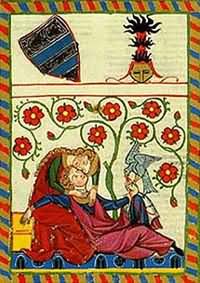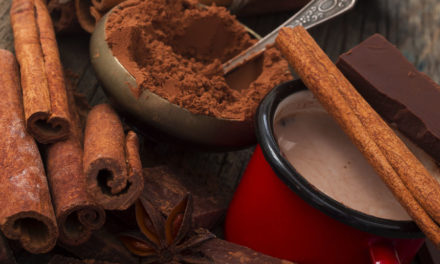Chocolate, Oh Chocolate, Wherefore Art Thou Chocolate?
Chocolate’s connection to Valentine’s Day now seems as natural as popcorn at the movies, but it took centuries for the two essential elements — the rise of chocolate as a popular treat and the celebration of Valentine’s Day as a holiday — to merge.
Chocolate originated as a treat for the wealthy, and even when it finally reached England in the 1650s, it still remained a drink only for the elite thanks to high import duties on cocoa beans. Over time, however, the market stabilized and chocolate became more freely available.

In 1657, a Frenchman opened the first London Chocolate House, and shortly thereafter, chocolate houses began to rival coffee houses as social gathering spots. People touted chocolate not just for its taste, but also for its medicinal uses as well. That same year, a shop opened on Gracechurch Street advertising chocolate as “a West Indian drink (which) cures and preserves the body of many diseases.” I wonder if they also sold snake oil?
Over the next century, chocolate’s popularity continued to increase among both common folk and royalty. When Marie Antoinette married Louis XVI in 1770, she brought her personal chocolate maker to Versailles. The official “Chocolate Maker to the Queen” created unique recipes such as “chocolate mixed with orchid bulb for strength, chocolate with orange blossom to calm the nerves, or chocolate with sweet almond milk to aid the digestion,” strangely similar to artisan chocolate makers today, with their ever-increasing mixtures of flavors, textures, and health conscious ingredients.
Celebrate Love
By the late 1700s, chocolate had certainly made its mark, but when did Valentine’s Day arrive on the scene? Many connect the holiday to various early Christian martyrs named Valentine, and of course the most popular story specifically credits a Roman priest who married young couples against the wishes of Emperor Claudius II. He was beheaded for disobeying the emperor’s wishes on the 14th of February.
In truth, however, the exact origins and identity of St. Valentine are not known, but it’s linkage to romantic love seems to debut in Chaucer’s 1382 poem, Parlement of Foules. Chaucer here describes the nature of love when “every bird cometh to choose his mate” on “seynt Voantynes day.”
Over the centuries, the notion of Valentine’s Day as a holiday to celebrate romantic love gradually grew, until, by the 1840s, it had taken over most of the English-speaking world. The prudish Victorians adored the notion of courtly love and showered each other with elaborate cards and gifts. And who can blame them? Giving and receiving gifts of love is one of the sweetest things in life, all the more reason for chocolate to crash the party…but I’m getting ahead of myself.
Chocolate Perserverance
Into this love-crazed Valentinian fray eventually rode Richard Cadbury, scion of a British chocolate manufacturing family, Cadbury Ltd. Richard and his brother George joined the family business in 1850 and 1856 respectively. In 1871, they took over when their father, John—who had founded Cadbury in 1824—retired due to ailing health. Lifelong Quakers, their family sold tea, coffee, cocoa and chocolate as alternatives to devilish alcohol, which they blamed for much of the poverty and deprivation prevalent among working people back in the 1800s.

The first five years for the young brothers were tough, filled with long work hours and frugal living. George concentrated on manufacturing and Richard led sales, although they both pitched in to help market their goods. Both considered taking other jobs to survive, but in 1866, Cadbury finally hit a breakthrough…
For the rest of Chocolate Meets Its Mate, click here to visit the Chocolate Connoisseur Magazine Shop and either subscribe or just pick up the February 2017 issue.
FEBRUARY 2017 ISSUE PREVIEW







